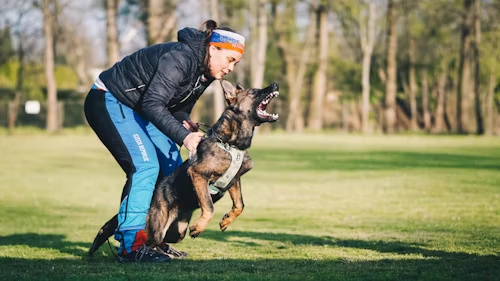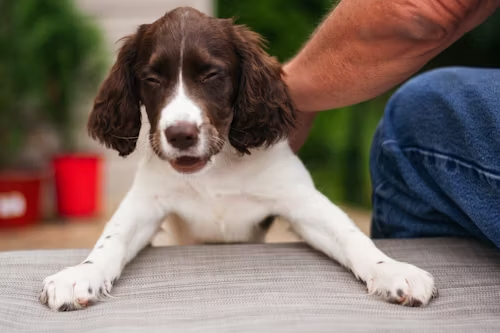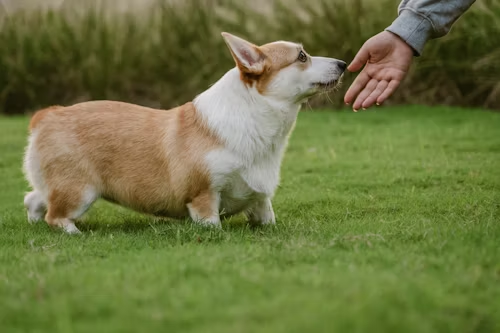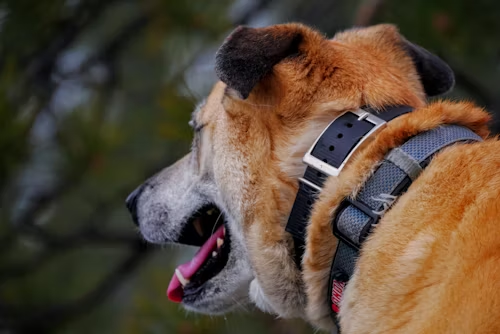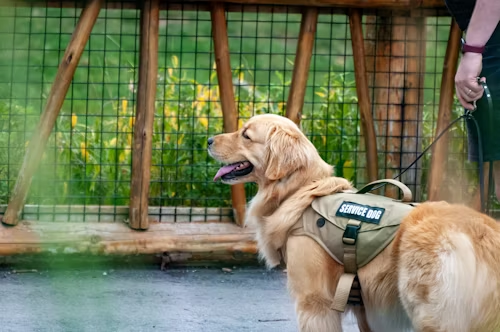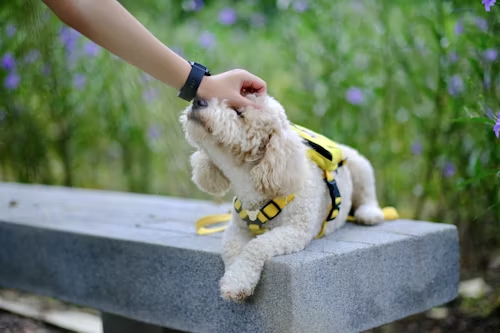If you’re reading this, you’re likely living with a dog who shows signs of aggression; growling, snapping, or perhaps even biting. That can be deeply unsettling, especially when your dog is part of your family.
I want to start by reassuring you that you are not alone, and there is real help available.
Aggression in dogs is not a sign that your pet is “bad” or “beyond help.” It’s a form of communication that has gone wrong. Dogs display aggression when they feel unsafe, uncertain, or misunderstood. With the right guidance, consistent training, and patience, many aggressive dogs can learn to relax, trust, and behave safely again.
In this guide, I’ll walk you through what causes aggression, how to train and manage an aggressive dog, and when professional intervention is the right choice. My goal is to help you understand your dog’s behavior clearly and respond effectively and safely.
Understanding What Dog Aggression Really Means
Aggression is a behavioral response, not a personality type. It covers a range of actions meant to warn, defend, or push away a perceived threat. Some dogs bark or growl; others may lunge, snap, or bite. These are common types of aggression you may observe:
- Territorial aggression: Protecting a specific space, such as your home or yard.
- Fear-based aggression: Reacting defensively when frightened.
- Protective aggression: Guarding family members or other pets.
- Resource guarding: Defending food, toys, or resting spots.
- Leash reactivity: Lunging or barking at people or dogs during walks.
- Pain-related aggression: Acting out because of injury or illness.
The Real Causes Behind Aggression
Aggression rarely appears out of nowhere. It’s almost always linked to one or more underlying factors. Let’s discuss the most common causes.
1. Lack of socialization: Dogs that weren’t properly socialized as puppies may grow up fearful of new people, animals, or environments.
2. Negative experiences or trauma: Dogs who have been abused, neglected, or frightened in the past may use aggression as self-protection.
3. Inconsistent boundaries: Without clear and consistent rules, dogs become anxious and may act out unpredictably.
4. Medical issues: Pain, hormonal imbalance, or neurological problems can trigger irritability and aggression. Always start by consulting a veterinarian.
5. Poor communication from owners: Yelling, hitting, or inconsistent corrections only create confusion and fear, which can make aggression worse.
Can Aggressive Dogs Be Rehabilitated?
Yes, most can. In my experience and that of many certified behavior professionals, aggressive dogs can improve significantly when training is handled correctly. It’s important to understand that this is not a quick fix. Behavior modification requires time, patience, and structure.
The goal of rehabilitation is not to “dominate” the dog, but to change how the dog feels about the world. We teach the dog that triggers (such as strangers or other dogs) are not threats, and that calm, non-aggressive behavior is rewarding.
How to Train an Aggressive Dog: Step-by-Step Approach
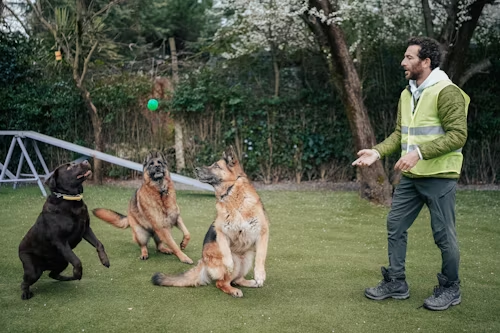
If you want to start addressing your dog’s aggression safely, follow this framework. These are the same principles used by professional trainers and behaviorists.
Step 1: Rule Out Medical Problems
Schedule a veterinary exam before beginning training. Pain or illness often causes sudden irritability or defensive behavior. Addressing a health issue may resolve the aggression entirely.
Step 2: Identify Triggers
Observe when aggression occurs. Is it around food? Strangers? Other dogs? Write down details about what happened right before, during, and after each incident. Recognizing triggers allows you to predict and manage situations more effectively.
Step 3: Create a Safe and Structured Environment
Provide your dog with a quiet, secure space where they can relax without fear. A crate or separate room can help reduce stress. Avoid forcing interactions or exposing your dog to situations they cannot yet handle.
Step 4: Use Desensitization and Counterconditioning
These are powerful, research-backed methods for changing emotional responses:
- Desensitization: Gradually expose your dog to their trigger at a low intensity—far enough away that they remain calm.
- Counterconditioning: Pair that exposure with something your dog loves, such as treats or praise.
Step 5: Reinforce Calm Behavior
Reward good choices. Every time your dog looks at a trigger without reacting, calmly mark that behavior (“Yes” or a clicker sound) and reward it. This teaches your dog that calmness earns rewards.
Step 6: Avoid Harsh Methods
Do not use shock collars, choke chains, or intimidation. These tools may stop symptoms temporarily but worsen fear and increase aggression long-term. Science consistently supports positive reinforcement as the safest and most effective approach.
Step 7: Seek Professional Help When Needed
If your dog has bitten, draws blood, or poses a safety risk, contact a certified behaviorist or positive reinforcement trainer. Look for credentials such as CPDT-KA, IAABC, or CAAB. A professional can design a plan tailored to your dog’s triggers and learning style while prioritizing safety.
Useful Training Tools
The right tools make training more effective and humane. Here are safe, recommended options:
| Tool | Use | Guidance |
|---|---|---|
| Front-clip harness | Improves control during walks | Avoid prong or choke collars |
| Basket muzzle | Ensures safety in unpredictable situations | Introduce slowly and make it a positive experience |
| Long training leash | Offers distance while maintaining control | Ideal for gradual exposure work |
| High-value treats | Reinforce calm behavior | Use soft, easy-to-eat pieces |
| Clicker or marker word | Marks desired behavior | Helps precise timing during training |
Building Trust and Confidence
Rehabilitation depends on trust. Dogs learn best when they feel secure. Every interaction should reinforce the idea that you are predictable, calm, and safe. Every positive experience adds to your dog’s sense of safety and confidence. Over time, this stability reduces reactivity. Follow these principles:
- Stay patient and calm. Dogs mirror your emotional state.
- Keep routines consistent. Predictability reduces anxiety.
- Provide adequate physical exercise and mental stimulation.
- Never force contact or push your dog beyond their comfort zone.
Mistakes to Avoid
Many well-meaning owners unintentionally make mistakes that delay progress. Avoid the following:
- Punishing growling or warning signs. Growling is communication, not disobedience.
- Expecting fast results. Behavior change takes consistent work over time.
- Exposing your dog to triggers too soon or too intensely.
- Being inconsistent with rules and expectations.
- Using outdated “dominance” or “alpha” theories, which have been disproven by modern behavior science.
When It’s Time to Call a Professional
If your dog’s aggression results in injury, draws blood, or causes genuine fear at home, seek professional guidance immediately. This is not a sign of failure; it’s a responsible step that keeps everyone safe.
A qualified trainer or behaviorist will assess your dog’s environment, triggers, and emotional state. They’ll design a step-by-step plan and teach you how to implement it correctly. The goal is safety first, followed by long-term improvement.
Can an Aggressive Dog Live a Normal Life?
Many can. Some dogs will always require a degree of management, but with consistent training, structure, and realistic expectations, they can live peaceful, happy lives.
Rehabilitation is about progress, not perfection. Your dog may never love strangers or other animals, but they can learn to stay calm and controlled. Celebrate every step forward, no matter how small.

